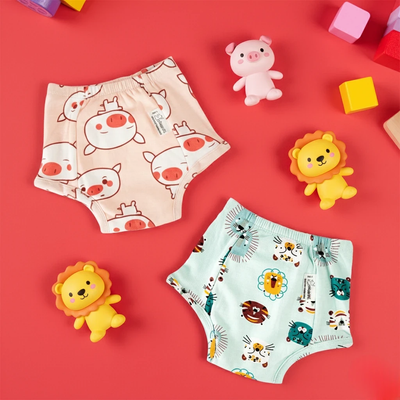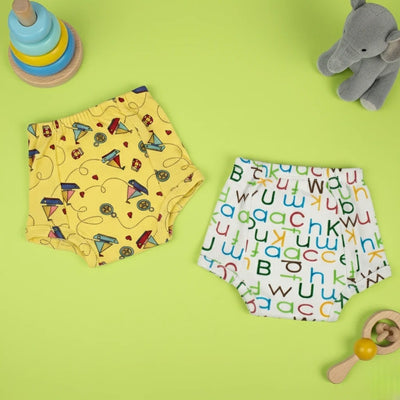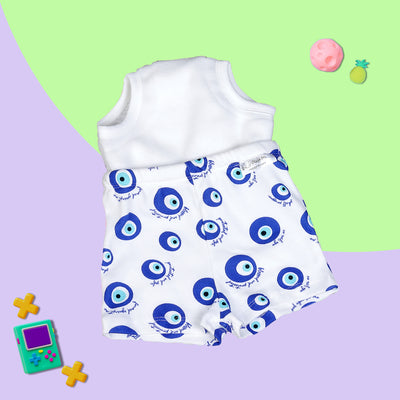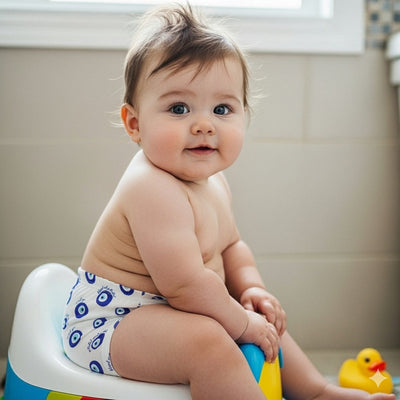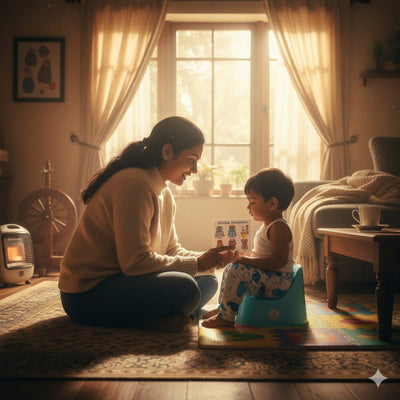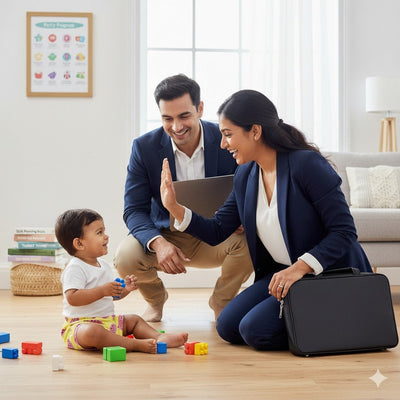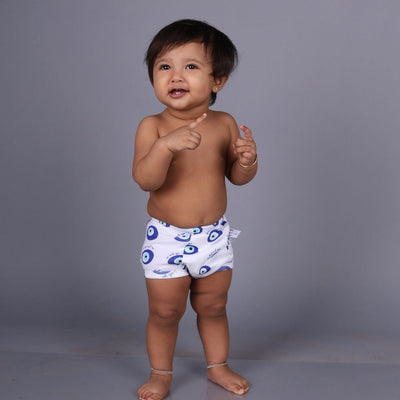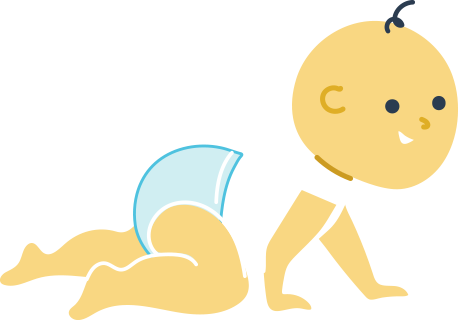Potty Training Tips for 1-Year-Olds
Potty training at 1 year old may seem early by traditional standards, but it's not uncommon for parents to introduce gentle routines at this age. While most toddlers aren’t developmentally ready to be fully trained until later, many show early signs of readiness, like staying dry for short periods or becoming aware of wetness. The focus for 1-year-olds should be on early introduction, creating positive associations, and helping them gradually get used to the idea of using a potty.
Here are practical, age-appropriate tips to help start potty training pants in a calm, low-pressure way
1. Begin with Observation and Familiarity
At this stage, the focus should be on building awareness rather than expecting your child to start actual training. Let your toddler watch you or older siblings use the bathroom. Narrating what’s happening in simple terms like “Mama is using the toilet” or “This is where we go pee” helps them connect actions to meaning. You’re not expecting them to mimic yet, just laying the foundation.
You can also place a small potty chair in the bathroom and let your toddler sit on it (with clothes on) during diaper changes or before bath time. This helps your child see the potty as a normal part of their daily environment, rather than something unfamiliar or intimidating.
2. Introduce Potty Training Pants Early
Instead of jumping directly from diapers to underwear, try transitioning to potty training pants. These are soft, reusable, and offer light absorbency, allowing toddlers to feel when they’re wet, an essential part of developing awareness. Because padded underwear is less absorbent than diapers, it gives toddlers important sensory feedback without the mess of going completely diaper-free.
Look for products made from breathable fabrics that are gentle on sensitive skin and easy to pull up and down. Brands like Snugkins offer washable, child-friendly padded underwear in fun prints that can help motivate toddlers to wear them happily.
3. Focus on Routine Over Results
Expecting a 1-year-old to consistently use the potty is unrealistic, but creating a routine around it is beneficial. Try guiding your child to the potty during natural transition times: after naps, before bedtime, or 20 minutes after meals. Even if they don’t go, the routine builds the habit of sitting and trying.
Keep these sessions short and calm, no more than a couple of minutes. You’re not looking for success every time. What matters most at this age is the exposure and the habit of sitting on the potty regularly.
4. Use Clear, Simple Language
One-year-olds are just starting to understand and use words, so keep your language simple and consistent. Choose one or two words like “potty” or “pee-pee” and use them regularly during changes or potty time. Repetition helps your toddler associate the word with the action, even before they can say it themselves.
Over time, these verbal cues become valuable in helping them communicate their needs, especially as they begin recognizing body signals and expressing themselves.
5. Dress Your Child in Easy-to-Remove Clothing
One-year-olds can’t yet dress or undress themselves, but using simple, stretchy clothes makes quick changes easier for you. Potty time can be unpredictable, and clothing with snaps or buttons can slow you down. Pairing loose outfits with potty training pants allows faster access when it's time to sit on the potty or after an accident. It also sets the stage for self-dressing skills later on, as your child grows into toddlerhood.
6. Keep Reactions Positive and Neutral
Accidents will happen frequently during this early stage, and how you respond can shape your child’s attitude toward the process. Avoid showing frustration or disappointment. Instead, calmly acknowledge what happened and clean up together, using it as a learning moment.
Phrases like “Oops, that’s okay-we’ll try again later” or “Let’s get you cleaned up” are reassuring and build trust. The more relaxed your response, the more confident your toddler will feel about trying again.
7. Encourage Participation in Small Ways
At 1 year old, toddlers may start showing subtle signs of needing to go, but these can be easily missed. Look out for subtle cues like your toddler squatting, suddenly pausing during play, or tugging at their diaper or pants; these may signal the need to go. These early indicators are a great opportunity to introduce the potty gently and consistently.
Even if your child doesn't always use the potty when showing signs, acknowledging their cues helps them start making the connection between body signals and toilet time. Over time, this builds the foundation for more active potty learning.
8. Watch for Early Readiness Signs - But Don’t Rush
Every child develops at their own pace. Some 1-year-olds may start showing readiness signs like staying dry for longer periods, squatting before pooping, or signaling discomfort in a dirty diaper. If you notice these, continue with gentle potty exposure. If not, don’t push. Early exposure is great, but forcing potty use before they're ready can lead to resistance later.
The key is to stay consistent but flexible. Revisit training in more structured ways when they approach 18–24 months, depending on their interest and ability.
Final Thoughts
Potty training a 1-year-old isn’t about quick results. It’s about introducing your toddler to the idea of independence in a gentle, age-appropriate way. With regular exposure, child-led routines, and the right gear like soft, easy-to-manage potty training pants, you’re setting up a strong foundation for success later.
Snugkins offer well-designed, skin-friendly padded underwear that’s perfect for early potty explorers. While every child’s timeline is different, starting with gentle steps now makes the process easier when they’re truly ready.
FAQs:
1. What should I do if my 1-year-old refuses to sit on the potty?
Resistance is normal at this age. Instead of pushing them, try making potty time a part of their routine without pressure. Encourage your child to sit on the potty fully clothed during diaper changes or before bath time to build a relaxed, pressure-free connection. Patience and consistency are essential throughout this process.
2. How many times a day should I try potty time with a 1-year-old?
Aim for 2–3 short sessions per day, especially after naps or meals. The goal isn’t success every time, but helping your toddler get used to the idea of sitting on the potty at regular intervals. Keep each session brief, no more than a few minutes.
3. What should I avoid when potty training a 1-year-old?
Avoid pressuring your child to perform, expecting quick success, or punishing accidents. Also, skip long potty sits, they’ll likely lose interest. Instead, keep it light, introduce the potty without expectations, and stay consistent. The process should feel relaxed and supportive, not stressful.

